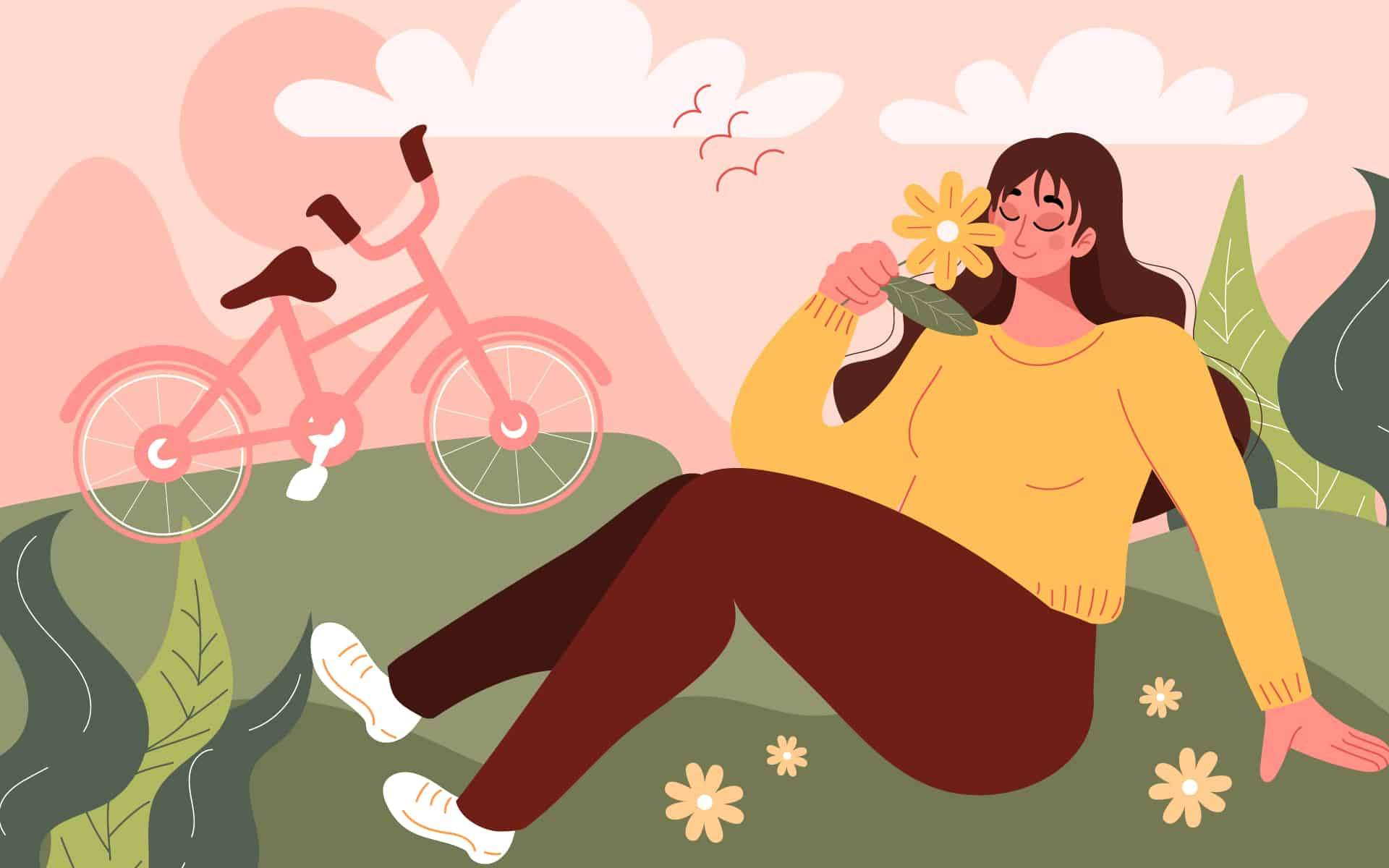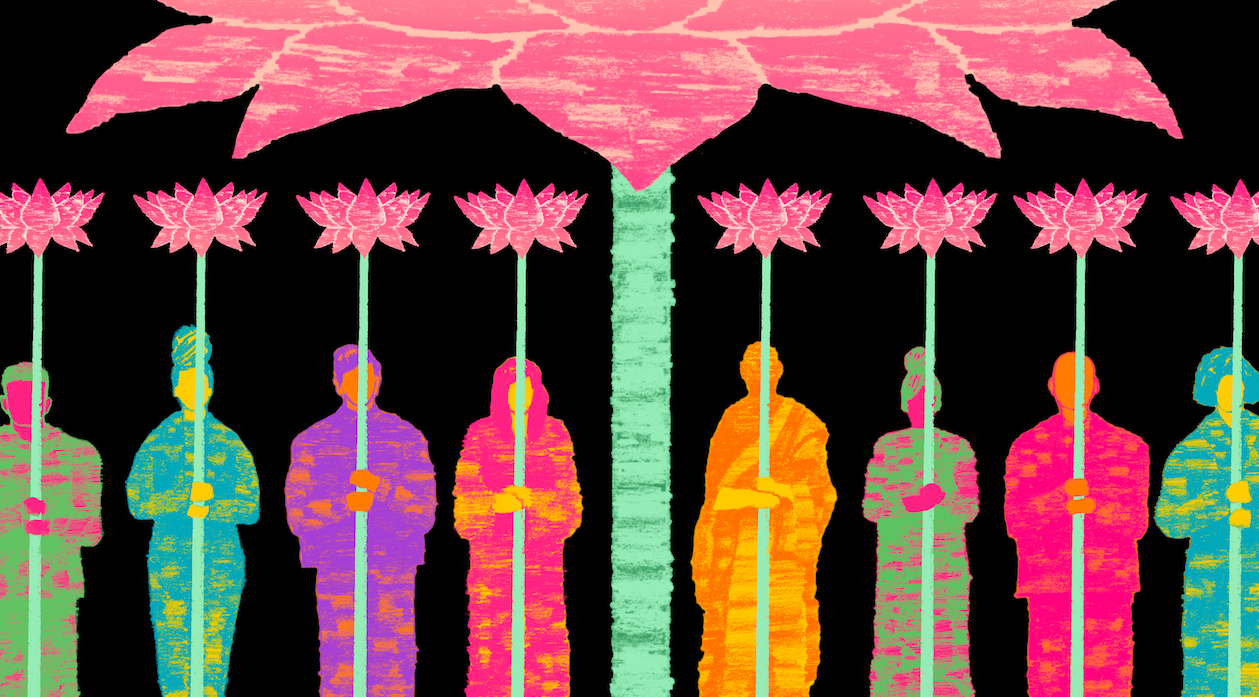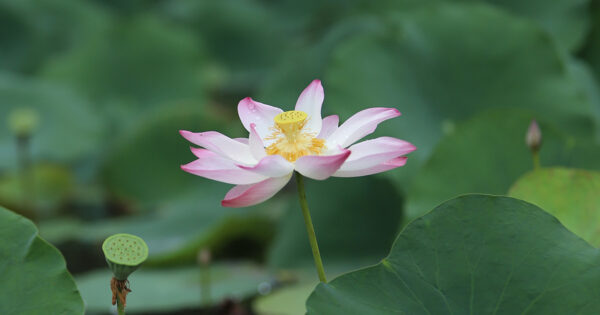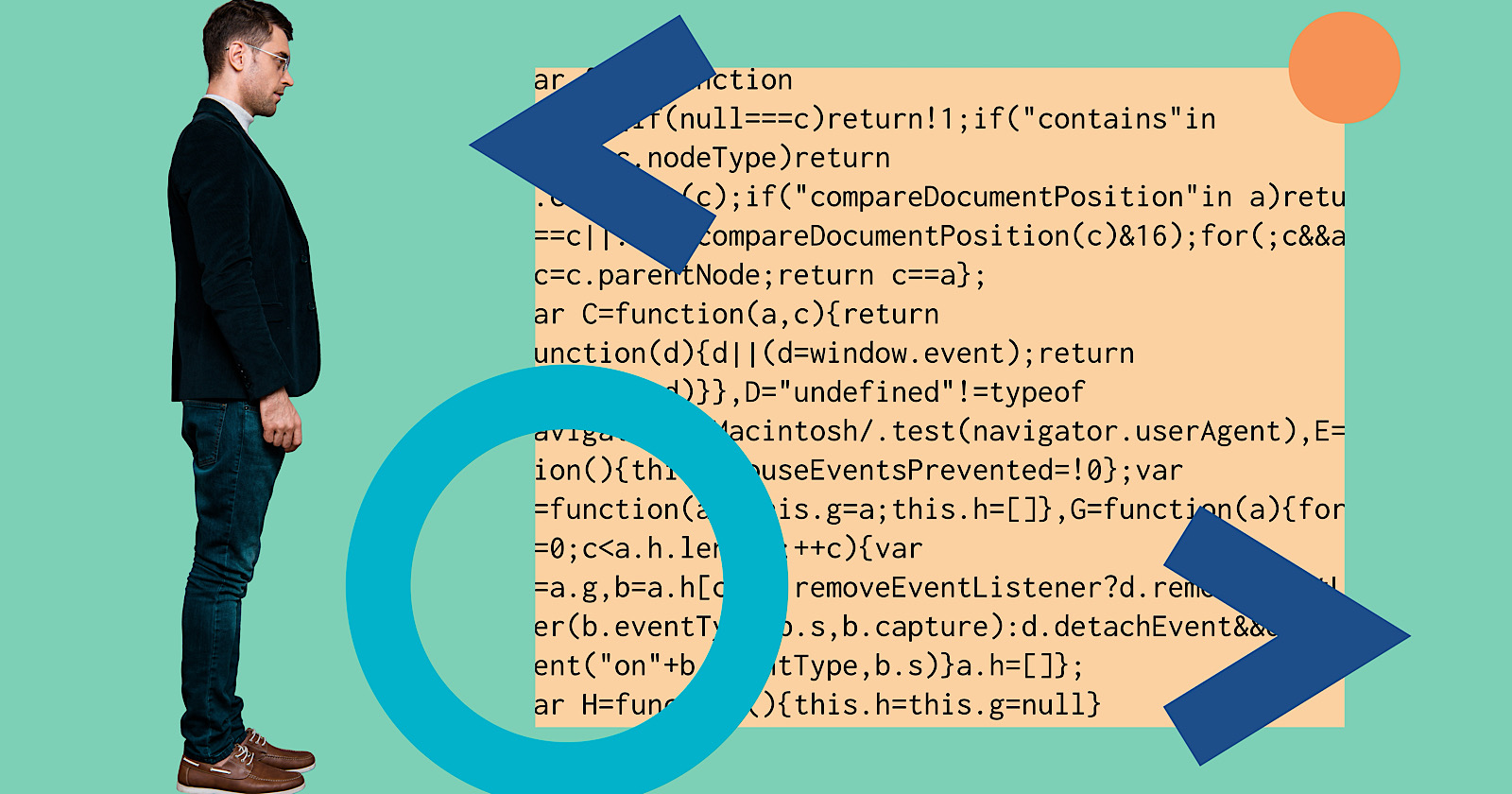Q&A: How Connecting With Our Senses Supports Mental Health and Resilience
Mindful founding editor Barry Boyce sits down with Norman Farb and Zindel Segal to talk about their new book Better In Every Sense and how reconnecting with our senses can help get us unstuck and establish new patterns. The...

Every one of us has likely had an experience of feeling “stuck” in a habit loop or mental state we wish we could change. Probably at multiple points, you may have wondered: Why is it so difficult to shift our perspectives and behaviors?
Norman Farb and Zindel Segal are longtime researchers who study how cognitive training techniques like mindfulness affect mental health. In their new book Better In Every Sense, they unveil some of their latest findings on the science of habit and change—findings which could hold the potential to help millions of people who struggle with anxiety and depression to find relief and resilience.
The findings in Better In Every Sense emerge from pioneering research illustrating two distinct modes underlying brain function: sensing the world and evaluating action.
The human brain’s Default Mode Network (DMN) maintains habits for perception, thought, and action, and it enables us to rapidly and automatically understand situations and solve problems. In some cases, our habits can be helpful. However, mental routines can also lock us into what Farb and Segal call a “House of Habit.” These habits can feel restrictive and can cause life to lose its spark. Feeling stuck can make us feel stressed, and when we’re in stress, the brain blocks out sensation, which makes the situation worse as we miss important information about the situation as it is, instead getting lost in the predictions and worries we’re projecting.
The question underlying their work became, Where does change come from when habit lets us down—especially when it comes to mental health and well-being?
And they found the answer in the world of sensation. In a practice they call “Sense Foraging,” they invite readers to intentionally shift their attention from thinking to sensing with a willingness to be surprised. When we do this, the brain relaxes and lets new information in. This helps us see new possibilities and reconnects us with the vibrant world around us, which in turn boosts our resilience, well-being, health, and creativity.
Here, Mindful founding editor Barry Boyce sits down with Farb and Segal to discuss their research, the book, and how they hope their work can have a positive impact on the complex world of public health.
Listen to the Full Conversation:
An Interview With the Authors of Better in Every Sense
Barry Boyce: Before we dive into the book, I’d like to hear from each of you a brief description of the main research work you’ve been doing and any possible applications. Maybe we can start with Norm.
Norman Farb: The research we’ve been doing has focused a lot on people who’ve recovered from episodes of depression and who are now trying to stay well. So they are still quite functional but at the same time, they have this history. They’ve learned to become experts at getting to this super low mood state. So how do you unlearn that? Or perhaps to put it better, What other skills can you learn to compensate for this history?
We’ve led one of the largest clinical trials in the world of people who have this history of depression, who then try to do some kind of therapy to learn lasting wellness skills. That set of studies really are the foundation for a lot of the work that motivated the book. Complementing that, we have research looking at the basic neural mechanisms of things like turning your attention toward your senses and your breath, which is a foundational practice.
Then there’s some applied wings where we try to get undergrad students to start doing a grain of self-reflection each day. We get people to start having a bit of intentionality around their own mental health and well-being.
Barry Boyce: I always find it interesting to understand the description of depression as an ongoing default habit or pathway that somebody can keep reliably going to—and how can you interrupt that? Then having done that, there’s a chance of relapse. How can those default habits be spotted?
Zindel Segal: The focus of my work has shifted, from gathering important clinical data to warrant the use of mindfulness-based interventions in the context of mental health care, into looking at how to develop means for increasing access to those very same programs.
I focus on the development of online resources—like my collaboration with Sona Dimidjian on developing Mindfulness-Based Cognitive Therapy programs for moms with histories of depression—and then look to see what the barriers are in some health systems to roll out these very same resources that are showing good benefit. I think part of the edge right now is the understanding that the data are strong enough to warrant adoption, but that the channels of distribution are really still quite limited. And in some ways, that was a motivating reason to try to write a popular science book, in the hopes that it could get into more people’s hands rather than a few people reading about this in scientific journals, but really not moving the needle very much at all.
Barry Boyce: Folks often think of public health as only being about things like viruses and those kinds of diseases. But depression and other mood disorders qualify clearly as a public health problem. If we find or create a thing that seems to be working, how do people find their way to it? Why don’t you let us hear your origin story about how the two of you stumbled into this book.
Norman Farb: We’ve been working together since I was a graduate student, just starting to run some of the early studies on what happens when community members do Mindfulness-Based Stress Reduction together.
But I think what really drove us is we started to realize that we’re discovering what seem to be fairly universal mechanisms about how the mind deals with stress, and how people can learn to cope better with their stress using the mindful interventions that we’ve been studying.
Beyond just people who are seasoned meditators, we’re thinking about a public health approach, and there’s this question of, Well, what about the people who are never going to meditate? There are still a lot of uses that are applicable in everyday life and that can bring everyone up.
We have access to some of these universal mindfulness principles that we’re touching upon, and one we can talk about is this idea that stress actually shuts down our ability to take in sensory information. We could provide that knowledge to the public and something to do about it that may look like meditation, but may also be accessible in a variety of other ways.
It would be a fairly low investment with a substantial or measurable return in a very large group of people. We might actually be able to do some good that way. So the motivation for the book came from thinking we have something that’s potentially universal here, and how do we get that idea across, even if it’s not the full trajectory of what might happen in contemplative training?
Zindel Segal: Norm and I have spoken a lot about the idea that there are different descriptions of the possibility for people to experience two different states of mind around the same physical phenomena. There’s the being mode and the doing mode.
You can eat via the doing mode and things are automatic and often hurried, or you can eat via the being mode, in which you’re actually tasting and much more deliberate and present. That can be very freeing because it lets people know that everything the mind is telling you can sometimes be discrepant from actual experience. That’s very valuable. But those kinds of insights may come from long term meditation practice, and we know very few people will undertake that.
So we identified that sensation seems to be a key portal through which people can switch into a receptive mode of sensory experience. Through the book, we’re really trying to suggest that these two modes exist, and stepping out of one into the other is as simple as shifting your attention and opening up to that. If people can taste some of that, I think that that’s a large measure of our book accomplished right there.
Barry Boyce: I want to jump straight into the book, in chapter six, where I found a nugget. It’s where you say that sensation is where the action is. So what do you mean by that? What led you to that conclusion? What does that imply?
Norman Farb: We’re seeing converging evidence that not having access to sensation is often a predictor of poor mental health vulnerability. Maintaining access to sensation in the face of distress is a really nice indicator that you’re going to be dynamic and resilient. You probably will feel more in the moment, but you’ll be able to feel something else in the future. You won’t just get stuck in the stressor, stuck in the negative feelings, because the information continues to flow.
We’re seeing converging evidence that not having access to sensation is often a predictor of poor mental health vulnerability.
So that’s one of the main messages of the book and why, if we’re thinking from a popular perspective, we really want to get across that people ought to take the benefits of sensory attention more seriously. This led us to come up with terms like Sense Foraging as a real intentional practice of getting into your senses.
Barry Boyce: Can you say more about this habit of shutting out sensation? What’s that about?
Zindel Segal: In the therapy world, sensation is having a heyday, pointing to the body being an important nexus for the processing of negative emotion. In some ways, it’s a counter response to an emphasis on being able to think one’s way out of problems by correcting assumptions or beliefs or faulty interpretations, and recognizing that working in the body and through the body can provide an experiential release from the way in which tension and freezing and shutdown can occur.
You also have some of the work around polyvagal responses, which represent whole body states that people can implicitly move into. So the therapy world is kind of abuzz with the notion of the importance of sensation, importance of the body. And I think part of what’s being echoed in both that work and what we’re seeing is, shifting from thinking into sensing can be a very wholesome act. When it comes to being able to do that in our book, we’re trying to help people see how that could feed into flourishing and how that could feed into well-being in a larger sense.
We don’t have a particular program that people have to follow, but the idea is that our emotions represent themselves in the body. If we think about emotions, we are one step removed from feeling them. If we actually feel them in the body, we have more of a handle on what they’re doing. And sometimes by locating ourselves in the moment, what they’re doing to us may be quite different from what the mind is telling us they are doing to us, and there may be some relief or some optionality that presents itself. That’s why when we say, sensation is where the action is, we feel there’s a lot of traction that can be gained by starting to recognize that.
If we think about emotions, we are one step removed from feeling them. If we actually feel them in the body, we have more of a handle on what they’re doing.
Barry Boyce: So far we’re just talking about sensory activation being where the action is. So is it an entry point? Is it completely unrelated to mindfulness meditation?
Norman Farb: I think it’s okay for these concepts to overlap. And of course they do in the different foundations of mindfulness, mindfulness of the body being the first foundation. This idea of actually opening yourself up to your senses is like the beginning of a longer arc that may eventually lead through feelings and thoughts and then metaphysics and deeper insights.
I really think what we’re trying to do here understand what’s so important about sensation. Why start with sensation? What does it mean to be human and have this conceptual mind, and also this ability to be connected to the world and to lose track of that connection? Why would even a mindfulness practice start there? And if we really understood that mechanism, we could perhaps more deeply understand some of these entry points to mindfulness and other contemplative practices. We could understand the mechanism in ways that are not ensconced within just the mindfulness tradition.
With this idea of sense foraging, of learning to actually shift into this receptive mode of sensing, we see all human beings have this capacity. Many of us are not exercising this capacity. Mindfulness traditions definitely begin with instructions that have stood the test of time, that are one way of moving out of this kind of conceptual mind and into a receptive mind—of not just always fighting with the mind, but actually fundamentally realizing that there’s a shift when you let stuff in.
As long as it kind of follows these principles, you find your way of sense foraging. It definitely overlaps with mindfulness, but it’s not just mindfulness. And mindfulness is so much more than just foraging. But it does seem like sense foraging is a foundational practice within mindfulness, that maybe there are lots of other ways that people can access the sort of universal technology of moving from doing to being.
Barry Boyce: Well, then let me ask a question. Say there are two people swimming, Bob and Joe. They’re both doing the same thing, but Bob has understood something about sense foraging. What’s the difference?
Zindel Segal: The person who is sense foraging, maybe they have a garden in their backyard and they go and spend just five minutes in the morning looking at flowers, looking at different colors, feeling the different temperature. It’s practicing being able to step into this receptive mode where they’re not anticipating, they’re just receiving, kind of putting the mind into a different place while the world comes into them.
The experience of sense foraging basically stops there, whereas a mindfulness practice would continue going deeper. But can those kinds of moments enable people to build something into their own lives, where the taste of the receptive mode can be continually available to them, and help them in other ways that have yet to be documented and explored? Very possibly.
I think we’re still on the early edge of all of this work. So we don’t see it as a substitute for mindfulness. But we feel like it’s worth a shot, especially because our brains, as we know, are more capable of offering this receptive mode to us the more we practice. It brings to mind a phrase that Sharon Salzberg once said: “Brief moments, many times.” So, unmediated experience, brief and received and repeated many times, rather than a moment that is elaborated cognitively—it starts out as one thing, becomes something else, and then it becomes a story. I think these moments of sense foraging are often able to offer a brief moment, and maybe only that.
Barry Boyce: How do you hope readers will actually use this book? You’ve made some suggestions, but I’d like you to say more. What sort of person do you envision making use of it?
Norman Farb: I think we’re looking for a reader who really wants to have a deeper appreciation of a mechanism. They don’t just want to take on authority because someone with these credentials or the spiritual vision or whatever said so. They say, “If you give me a good ‘why’ then I’ll try something. I’ll be open minded if you can give me a good mechanism in a good way.” I think that’s the target audience, and someone who’s really trying to find a way to get unstuck. Someone who’s doing the right things, who’s trying to live a good life, and is still just feeling this stickiness, this dissatisfaction and isolation.
We have more knowledge than ever about the need to take care of mental health,the idea that we can do things that are useful, the research that’s coming out of all the different activities we can do—but you have to be there for it.
Barry Boyce: Could you say something about what’s adaptive about the brain as a predictor and what also could be problematic? Why is the element of surprise important when it comes to sense foraging?
Zindel Segal: It’s really helpful for people to learn that we’ve evolved evolutionarily to be able to predict what’s coming next and that the brain is really specialized to interpret signals both from inside our bodies and signals from the outside environment to help us optimize survival.
Some of those signals might be very typical signals: your heart starts to race, you have a fever, you feel dizzy—that’s going to send off an alarm signal. If you are walking on the street and in front of you far away, there’s a bushy animal, you need to figure out if it’s a coyote or a dog. So the brain has, as its number one job, the ability to predict what’s coming next. That’s really helpful in many, many circumstances to predict what’s coming next and then to rely on the past to generate solutions based on things that maybe you’ve read or heard other people say to enable problem solving, to optimize problems, and make them go away. It’s not such a great template for dealing with emotions that are somewhat chaotic, that can be cloaked, that can have multiple, simultaneous meanings. And so the same solutions that are often driven by routine and habit get applied to our emotional lives.
Freud was one of the first people to come up with some of the descriptions of how emotions can be hidden from ourselves, how they can have multiple meanings at the same time. This is not a very good problem for a predictive coding version of our minds to try to deal with. Because with multiple meanings, contradictory meanings, ambivalent meanings, the natural tendency is to want to reduce pain by denying and suppressing.
The value of the sense foraging perspective is to allow us to step out of this inventory of mental routines that have been used time and time again to show us that there may be some other opportunities available to us that don’t involve jumping immediately to fixing, to resolving. That may involve unanticipated strategies that involve curiosity or investigation.
In other words, keeping the signal alive rather than burying the signal or cutting off the signal. And how do we make that shift? That’s a hard shift. And so the elements of the sensory world enable us to do that, because there is a sense in which that chaotic world that has chaotic elements can often surprise us. And surprise can be a way of suggesting to us that there’s more in the world than our minds can ever anticipate and never describe to us. If people have that experience often enough, sometimes it can help them get a little bit of space around these other reactions and see where things go.
Surprise can be a way of suggesting to us that there’s more in the world than our minds can ever anticipate and never describe to us. If people have that experience often enough, sometimes it can help them get a little bit of space around these other reactions and see where things go.
Barry Boyce: Let’s talk about timeliness. You’ve already made some suggestions about ways in which the book is timely. In therapy, there’s a movement afoot to bring sensory more into clinical applications. So in what ways is sense foraging and your book particularly timely?
Norman Farb: We have evidence from a few different fronts that it really is needed more than ever, this ability to to reconnect with what’s happening around us. There’s the ubiquity of screens (we’re talking through screens right now). The concern for future generations’ ability to just have regular attention, not even talking about super meditator attention or anything like that. Given the environment we’re in, the idea that we’re an attention economy where the most precious commodity a person can have is the ability to captivate us. And as a consequence of that, we see that the rates of diagnosis of anxiety have more than doubled in the past decade or two. Depression is now going to be a leading cause of disability in the world. In the United Kingdom, they’ve established a minister for loneliness because of how disconnected people are feeling.
The thing that’s the most tragic about it is we’re living in a time of profound abundance, right? But are we really able to have that final skill that we need, which is to put ourselves out there, to make use of the kind of things that we know make life enriching? And based on all these negative things that I’ve just been mentioning, it appears that that final step is missing. This idea that people are languishing despite the abundance that we inhabit, that we’re we’re caught up in narratives about the end of the world and tragedy and despair which exists in the world, but we don’t have the skill to balance that with the realization that there’s so much beauty, connection, love, and opportunity for agency. I think that’s the timeliness of a message like this: that you’re so close, that on the other side of this despair and hopelessness is the possibility of engagement. It’s going to be pretty scary to get engaged when what you believe is already that the world outside is a negative and potentially unforgiving or unsafe place to be. But without that engagement, you’ve already condemned yourself to continue to live in that set of expectations in that hopeless world.
This idea that people are languishing despite the abundance that we inhabit, that we’re we’re caught up in narratives about the end of the world and tragedy and despair which exists in the world, but we don’t have the skill to balance that with the realization that there’s so much beauty, connection, love, and opportunity for agency. I think that’s the timeliness of a message like this: that you’re so close, that on the other side of this despair and hopelessness is the possibility of engagement.
These practices that flip the script are available if we’re able to just take small risks, like talking to someone we would normally not talk to, opening up emotionally, letting ourselves just feel things for a while instead of always trying to solve problems and then wondering why. I think we need this kind of messaging more than ever. If this book itself is just one way of people starting to wake up to their own potency, in being able to re-engage with their lives, then that’s great.

 AbJimroe
AbJimroe 
































